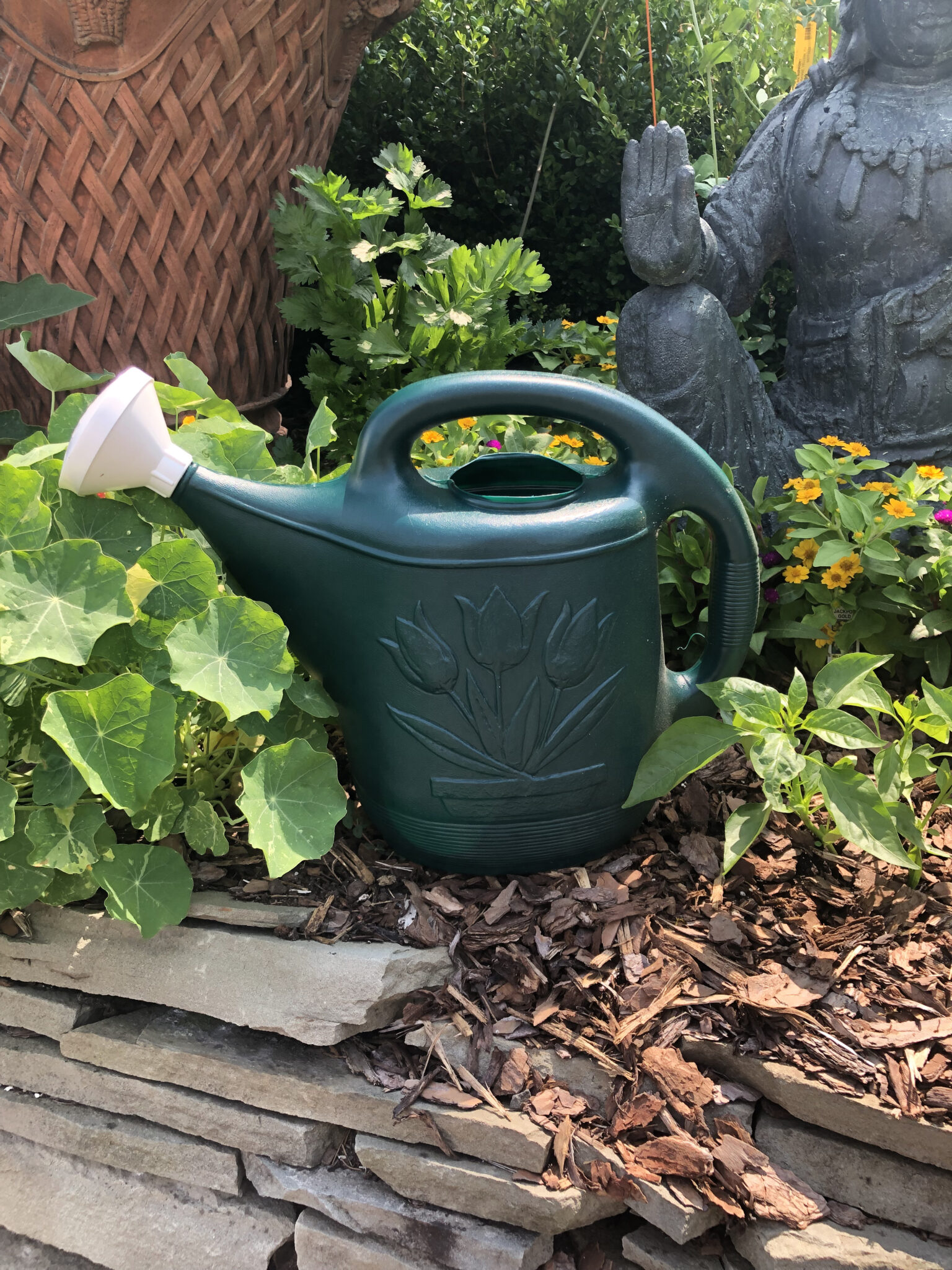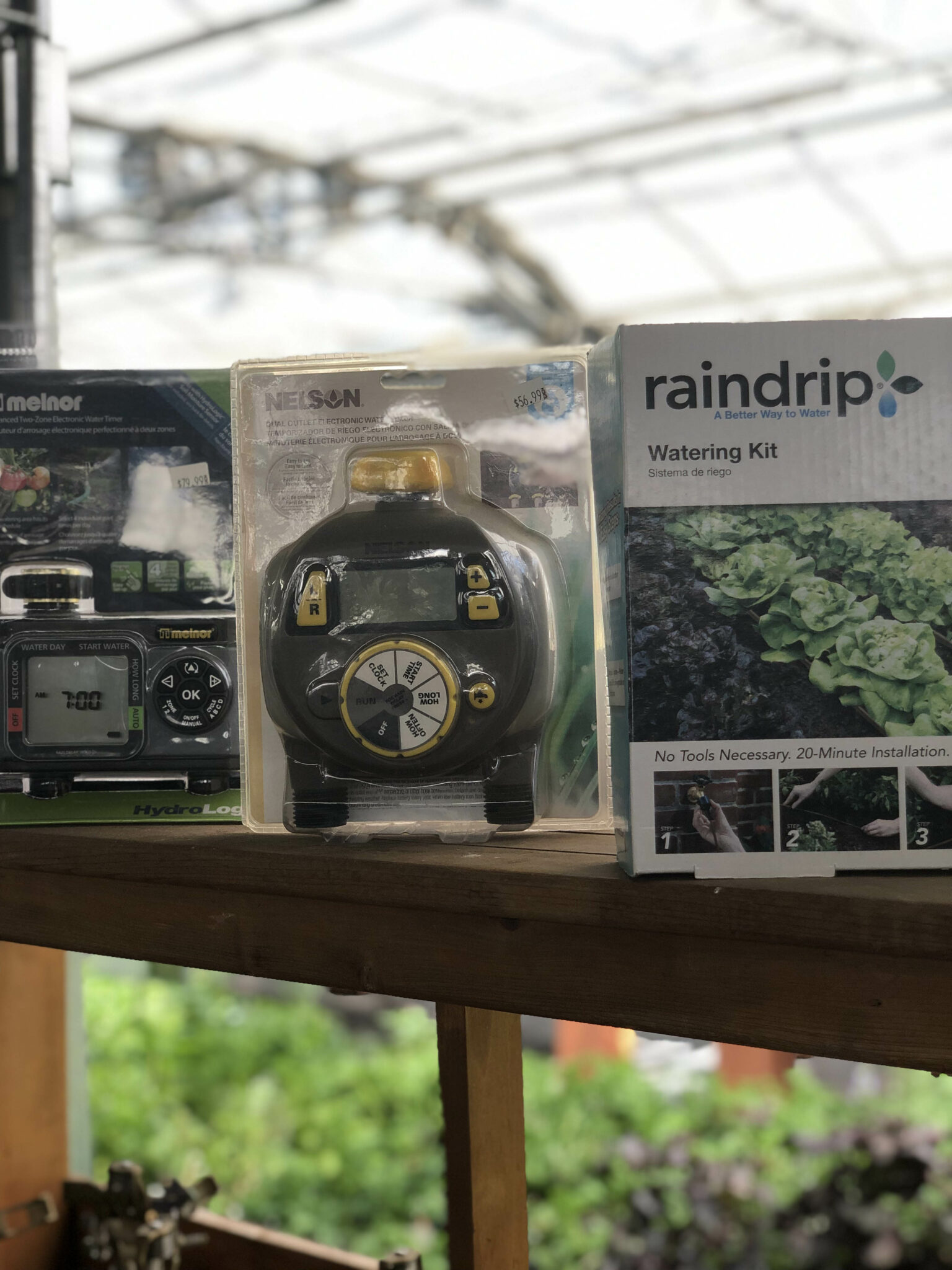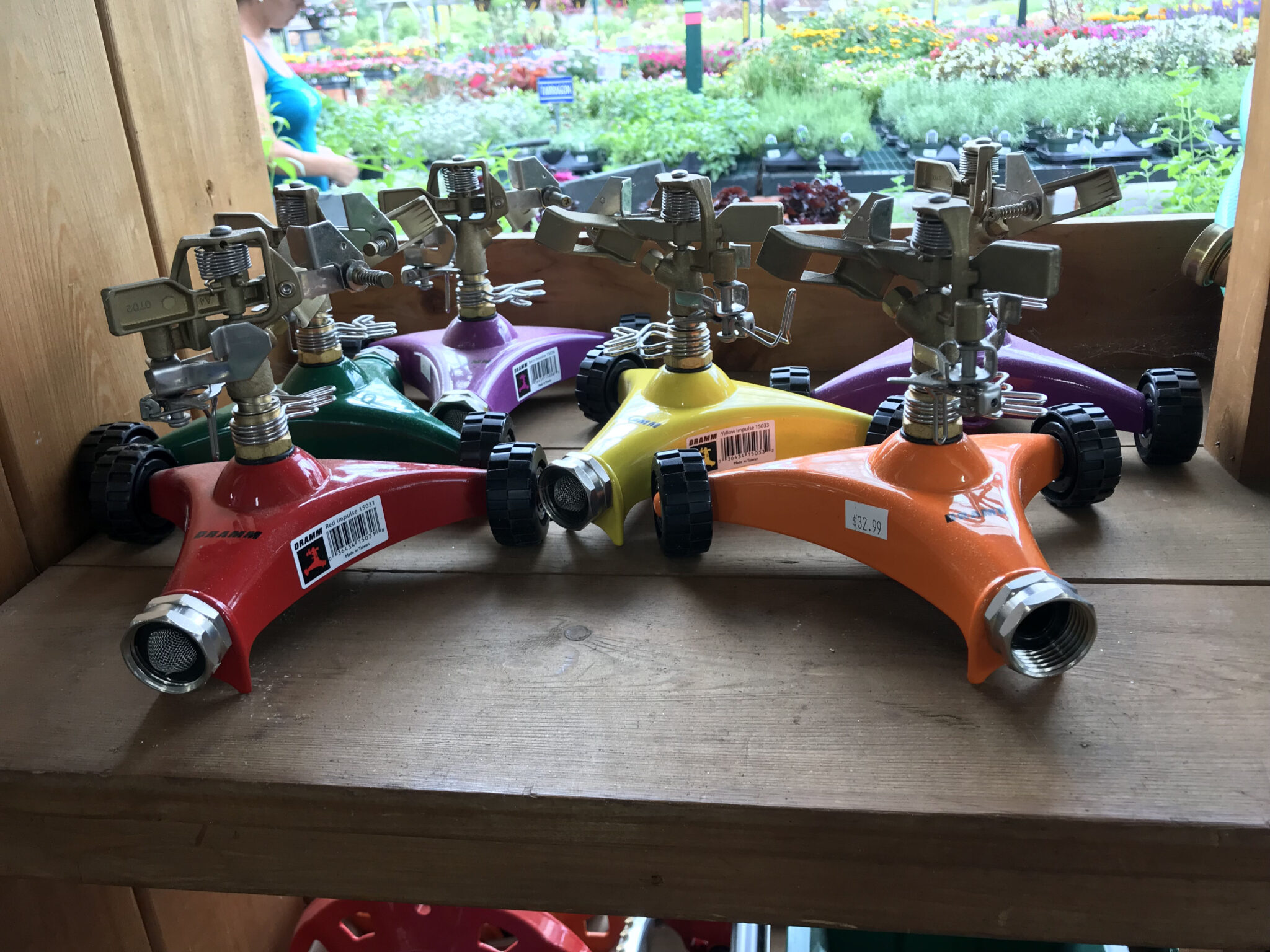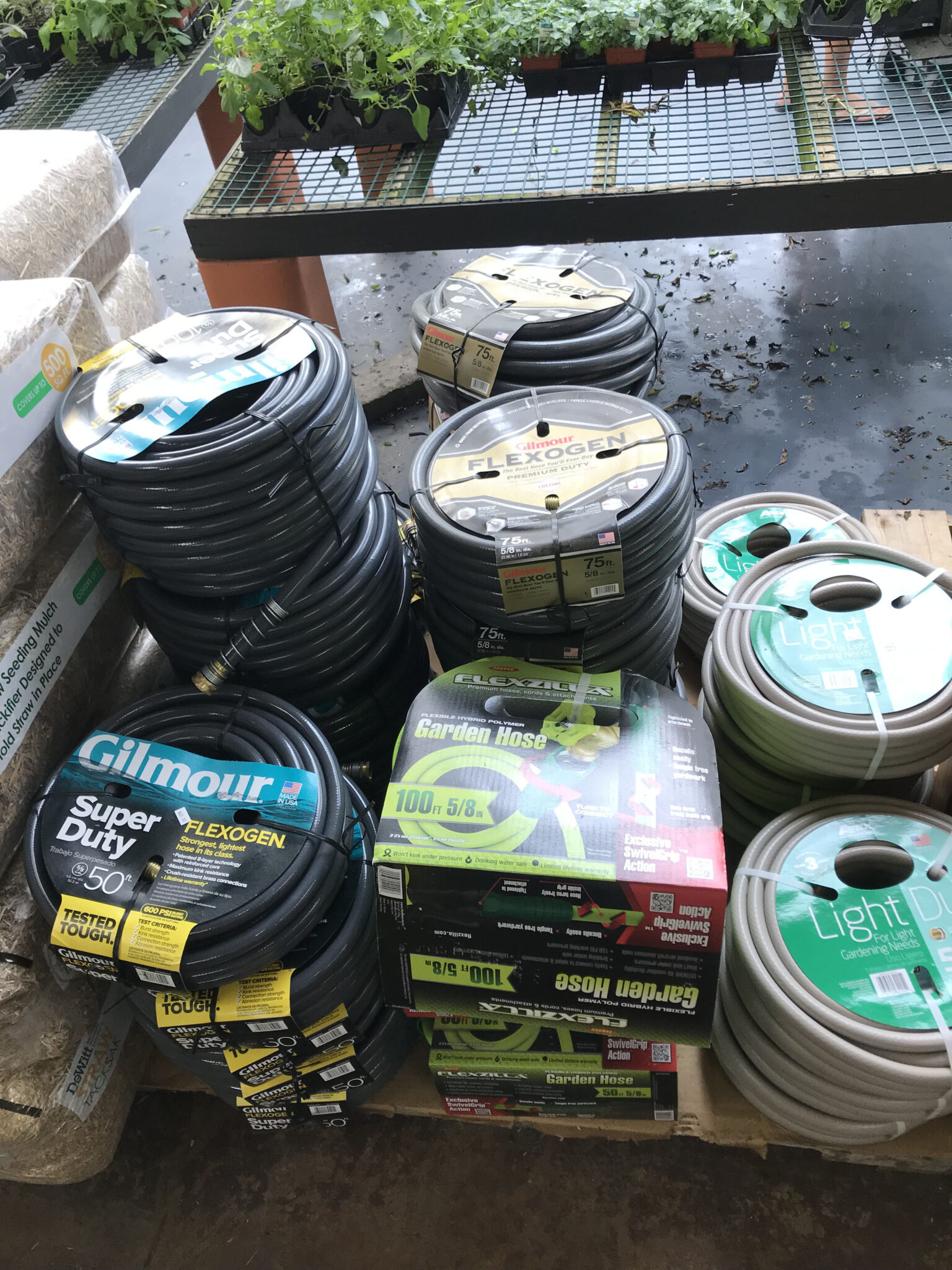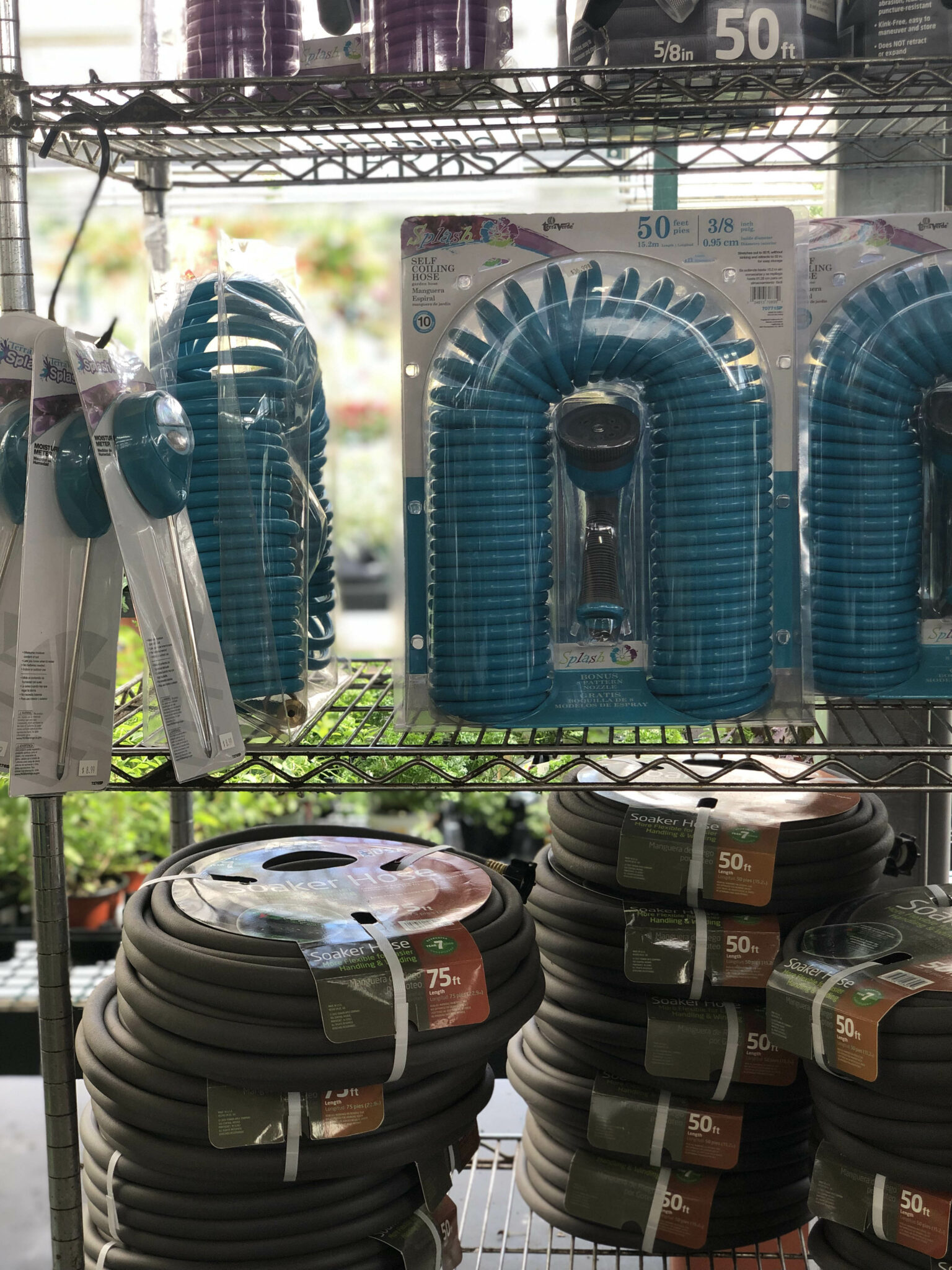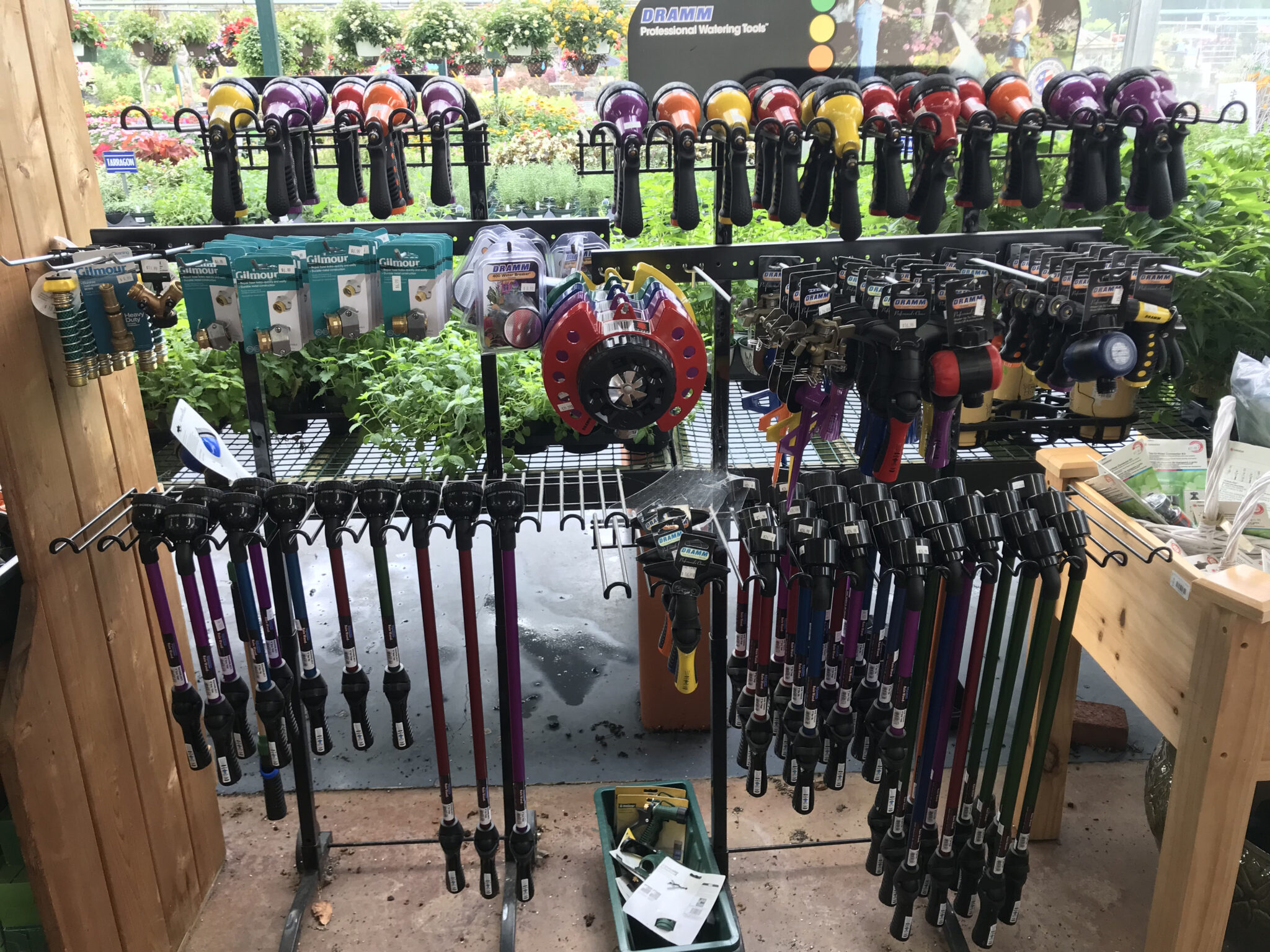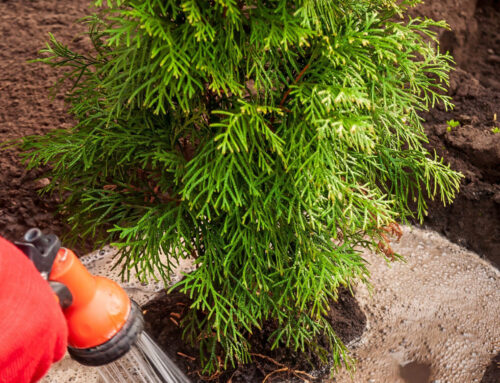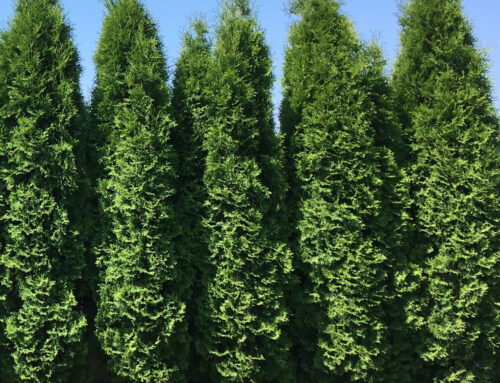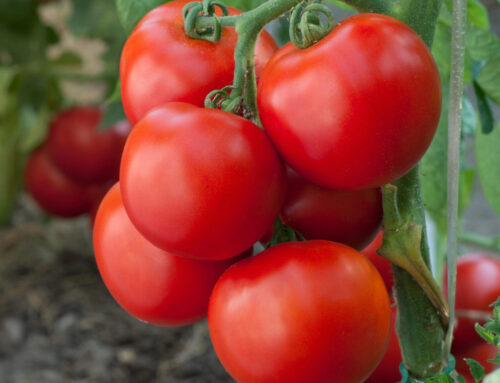In the middle of summer, most of your leafy green vegetables should be on their way out (don’t worry, you’ll be able to start them up again in the fall) and plants like tomatoes, cucumbers, melons and squash are here to stay. With extreme heat and sun it’s easy for these plants to dry out and wilt if not watered enough or properly. Most summer veggies are decently sized and full of flavorful juice. That juice is water, without keeping your plants well hydrated and properly maintained rot, disease, and even a dead plant can occur. To make sure your garden continues to thrive throughout the rest of the season, here are some helpful tips and reminders to keep your plants happy and hydrated.
It all starts from the ground up; soil must be holding water to attract more water. Think of your soil like a dry sponge, if it’s bone dry, the outside will absorb some water while the rest rolls off and never makes it to the center. The same concept stands with almost dry soil. The best way to assure moist soil around the whole plant is to water in stages, making multiple passes with your plants, increasing the amount of water during each passing. This process allows the soil to slowly absorb water and distribute it evenly to the center. Container plants dry out faster as heat shrinks the soil in the container and leaves a gap between the hot container wall and the roots. For container plants, the most efficient way to water during a heat wave is bottom-up. Sit the container in a big bin, pour water into the bin and watch as the plant roots make the water slowly disappear. The plant will absorb only as much as it needs as long as it sits in the water.
Knowing which of your plants is the first to wilt, such as squash, cucumbers and melons, will help you identify when watering is needed. Introducing a Moisture Meter or Rain Gauge will help visualize the amount of water your plants have and won’t leave you guessing when and how much. If you are unable to water your plants directly and are using a sprinkler, it is best to do so in the early morning or later in the evening when the sun isn’t at its strongest. Avoid adding extra lengths of time, as wet leaves breed mold or mildew. If you try to water when there is still dew outside, this problem can be avoided. Additionally, watering too late and not allowing plants to dry before sundown increases chance of fungal and bacterial disease.
Your plants’ roots need water, not the leaves. With the hot heat and long sun exposure, it is important that the roots are soaked, allowing water to sufficiently reach the roots. Long periods of watering are better than short, often water which causes roots to stay close to the surface where they could get burned out from the sun. It’s ok to allow a slight drying out between watering, this helps the roots grow deeper in search for water and thus grounding your plant further. Incorporating mulch on the ground around and under plants creates a barrier between the moist soil and the hot sun. Mulch will help keep moisture in and roots cooler.
Lastly, stay hydrated yourself! Garden as early as possible, wear light colored clothing, and sunscreen. Don’t forget to drink enough water.
Available at The Farm at Green Village for your watering needs- Sprinklers, Soaker Hoses, Watering Cans, Self-Watering Pots, Plant Nanny/Water Globes, Treegators and many more. We also carry a variety of mulch and sprays to counter bugs, burns, and nutrient deficiency.


